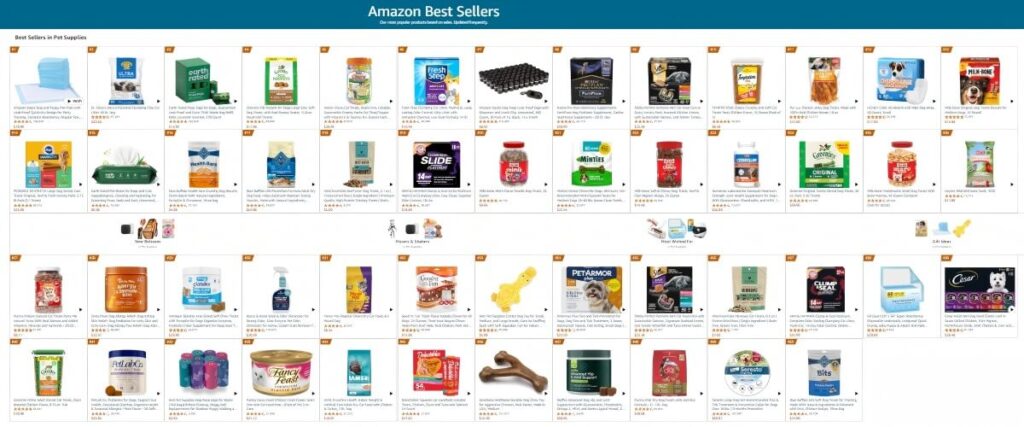Are you a pet enthusiast with a go-getter mindset? Starting an online pet supply business could be your next great adventure. The pet market is blazing with owners seeking one-of-a-kind, quality items for their pets.
But how do you rise above the crowded market? Follow these simple steps and establish a successful online pet supply business. Let’s get started!
Choosing the Right Platform for Your Online Pet Business
E-commerce Marketplaces (Amazon, Etsy, Chewy):
- Pros: Simple setup, huge audience
- Cons: Higher fees, less brand control
- Best For: Quick market entry and broad reach
Social Media Selling (Instagram, Facebook, TikTok):
- Pros: Great storytelling and community building
- Cons: Limited sales capabilities, continuous content required
- Best For: Visual products and influencer marketing
Direct-to-Consumer Website:
- Pros: Full brand control, owns customer data
- Cons: Upfront investment and marketing required
- Best For: Building a strong, long-term brand
Why High-Quality & Original Dog Products Are Winning Hearts
Pet owners these days need more than the essentials. They are seeking safe, innovative, and top-notch products that make a real difference for their dogs. So, the first and most important thing in your pet store business plans is finding a safe and Niche Products. Everything from natural treats to innovative toys, high-quality products are what everyone needs. This indicates how much attention people pay to the well-being and happiness of their pets.
The market for pets is enormous and expanding rapidly, valued at $321 billion in 2024 and projected to reach $538 billion in 2034. With that much competition, providing distinguishing handmade or exclusive dog supplies can truly give your brand an edge, especially online pet supply business, they are able to update their product faster than B&M store .

Top 10 Best Selling Pet Products In Amazon
Amazon’s top 10 best selling pet products reveal that cleaning items and food dominate the list, however High competition in pet products means brands must find new ways to stand out. One untapped opportunity? Partnering with dog friendly businesses. For example, a pet shampoo brand could sponsor washing stations at dog-friendly hotels, turning a routine product into an experiential solution.
- Pet Food & Treats
- Dog Poop Bag
- Dog Cleaning Wipe
- Chew Toy
- Cat Litter
- Dog Harness
- Dog Camera
- Dog Bed
- Pet Hair Remover
- Pet Nail Clipper

How to Open Your Own Online Pet Store: Step-by-Step
Follow these essential steps to set up your pet store business plan:
1. Market Research: Customer Needs, Brand Position & Competitor Analysis
Before you invest in a new company or start a website, get to know the pet market inside and out. Today’s pet owners don’t only want cheaper products—they want high-end, safe, and unique products that meet their pets’ health, lifestyle, and personality needs.
Begin by taking the pulse of pet owner communities through Facebook groups, Reddit, and Instagram and see what’s trending, what the product requests are, and what they like—organic treats, long-lasting chew toys, or eco-friendly accessories, for instance.
At the same time, do competitor research: What are the top 10 best selling pet products? Who are the leaders in online pet stores in your niche? What do they sell best? Where do they charge? Identify those niches that aren’t being addressed and figure out how your brand can take advantage of these needs that have been uncovered and then make a full online pet store business plan.
2. Creating a Brand and Defining Market Positioning
Your brand is not a logo—it’s your values, your story, and your promise that you’re conveying to pet owners. If you’re building an e-pet store, it is absolutely important that you clarify your brand positioning. Are you the one-stop pet store for vet-approved, organic dog treats? Or the style leader of hip, high-design pet accessories?

3. Legal Documents: Business License and Permits
Doing business lawfully is required. Depending on where you are and what products you are selling, you might need a general business license, reseller permit, or specialty certification (such as pet food or supplements).
For instance, selling food-grade pet products usually implies being in compliance with FDA or USDA requirements. Of course, there are also many products that require no certification and have a huge market potential, such as pet grooming business.
Register your business entity (LLC, sole proprietor, etc.) and local and/or state licenses required
4. Finding Suppliers & Product Selection: Private Label and Original Designs
To sell online one-of-a-kind pet merchandise, the most critical is sourcing. First, collaborate with trusted makers of private label products—like green toys or natural dog treats—and stamp them with your own brand. For those dog friendly businesses with a small budget or no design ideas for the time being, private labeled product make you getting to market earlier without massive initial product development expenses.
Here’s a sneak peek of the products that are flying off the shelves right now in pet supply stores:
- Bulk collapsible dog bowls are a huge hit among traveling dog owners—lightweight, portable, and perfect for travel or excursions.
- Grooming gloves and moulting brushes are essential for cat owners. They make shedding seasons easy and keep cats in top condition without any trouble.
- Another rising seller is the dog puzzle feeder—a fun and entertaining means of slowing down ravenous wolves and stimulating canines mentally.

For new sellers—especially those without prior experience in the pet industry—choosing products in less competitive categories is a safer way to test the market.
For example, within pet grooming business, many sub-niches have relatively low competition, making them more beginner-friendly. These segments often offer higher conversion rates for new products, as demand exists but supply is limited.
5. Costs and Profits: Pricing That Works
You should be aware of your costs. Start-up costs will include website design (or marketplace fees in case you sell through marketplaces), buying inventory, packaging, shipping materials, advertising, and attorneys’ fees.
Prices must capture your brand value and price expectations in the market. For instance, if you’re selling upscale, organic dog treats, low prices akin to mass-market snacks can negatively impact profitability and brand image.
Keep in mind that dog owners in America spend more than $1,700 each year on dogs, with a demonstrated demand for high-quality products—capitalize on this knowledge to support equitable pricing.
6. Marketing Strategies That Work for Your Online Pet Supply Business
Marketing is your engine of growth. Begin by speaking directly where pet enthusiasts congregate online: join and participate in Facebook groups, Instagram communities of pets, and TikTok pet niches. Develop useful content such as “How to select the safest chew toys” or “Organic dog food benefits” to establish authority and credibility.

7. Brand Image Creation: Establishing Trust Through Consistency
Your brand image is the visual and emotional impression that customers build at each touch point. Employ same color, type, and tone of speech that reflects your brand personality on your site, packaging, social media, and customer service.
For consumers, what truly matters is not just a pet company’s claim of being ‘dog friendly business,’ but whether it takes concrete actions to support pets. A prime example is Chewy, the largest U.S. pet e-commerce platform, which goes beyond slogans by dedicating a ‘Dog-Friendly Travel’ guide on its website—curating partnerships with pet-welcoming hotels and airlines.
The Perks of Running an Online Pet Store
From cost reductions to reaching more pet owners, here’s why beginning an online pet supply business is a good idea:
- You won’t need to stress about leasing a storefront location or having a full-time staff, keeping your startup expenses low.
- Instead of being limited to your community, you can sell to pet owners across the country—or even the world.
- Pet parents of today love the simplicity of shopping from home, especially for essentials like feeders, grooming tools, and toys.
- Web stores allow you to sell your shop through social media, email, and search engine optimization—often without a big expense.
- Your business can grow quickly with the right products and strategy, without spending much on bricks and mortar growth.
- You can change what you stock based on trends and customer demand, reducing waste and improving cash flow.
- Web-based resources offer you insights into what consumers are looking for so that you can make more intelligent decisions and enhance long-term sales.
Conclusion
It’s not just about generating income—starting an online pet supply business is about doing something you love for pets and building a valuable business. The pet industry is expanding rapidly, and the pet-owning public is seeking distinctive, quality goods they can count on.
Pet Supply Store: FAQ
Is a pet business profitable?
YES! Pet store sales keep rising, and it is expected to continue to grow, reaching $325.74 billion by 2028. but profits depend on business type—walking services cost less, while pet grooming business or boarding needs more investment.
What are the best dog business ideas for Online Pet Supply Business?
Dog training, dog grooming and dog walking are a good choice, while dog toy, dog food and other dog accessories also in high demand.
What is the best platform to sell pet products?
Your official website and social medial like tiktok would be a wonderful choice.
What pet products have the highest margin?
We generally thinking chew toys and premium pet food have the highest margin, the average gross profit margin typically ranges from 30% to 50%, while the net profit margin is approximately 10% to 25%.
How much does it cost to start a pet business?
While the average startup spends $40,000 in its first full year, actual costs fluctuate based on factors like business structure, number of employees, and online vs. physical presence.



